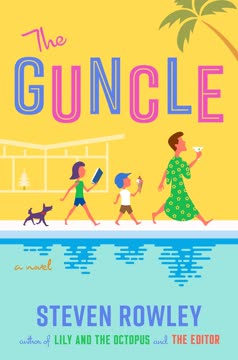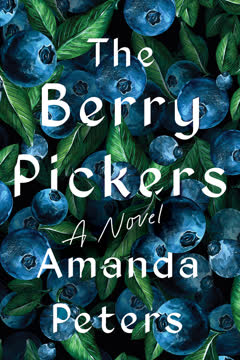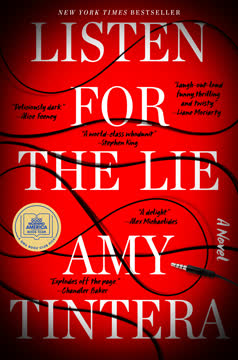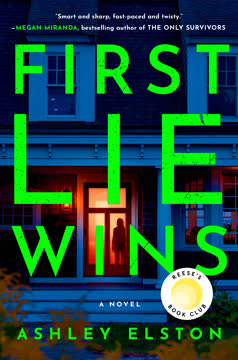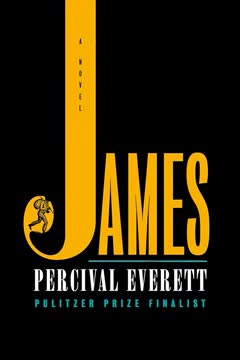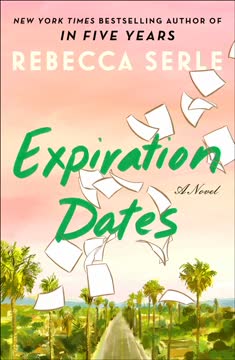Plot Summary
Unexpected Guardianship in Palm Springs
Patrick O'Hara, a former TV star, unexpectedly becomes the guardian of his niece and nephew, Maisie and Grant, after their mother, Sara, passes away. Living in Palm Springs, Patrick is thrust into a parenting role he never anticipated. The children, dealing with their grief, are introduced to a new environment, and Patrick must navigate his own feelings of loss while trying to provide a stable home. The transition is challenging, as Patrick grapples with the responsibilities of guardianship and the emotional needs of the children.
Navigating Grief and New Beginnings
As Patrick, Maisie, and Grant settle into their new life, they each confront their grief in different ways. Patrick reflects on his past with Sara, their friendship, and the life choices that led them to this point. The children, still processing their mother's death, find solace in small routines and the presence of their uncle. Patrick begins to see this unexpected guardianship as a chance for a new beginning, both for himself and the children, as they learn to navigate their shared loss together.
The Art of Storytelling and Healing
Patrick uses storytelling to connect with Maisie and Grant, sharing memories of their mother and his own life experiences. Through these stories, he hopes to provide comfort and understanding, helping the children process their grief. The act of storytelling becomes therapeutic for Patrick as well, allowing him to reflect on his own life and choices. This shared narrative helps build a bridge between the past and the present, offering a path toward healing for all three.
A Family Reimagined in the Desert
In the desert landscape of Palm Springs, Patrick, Maisie, and Grant begin to form a new family unit. They establish routines and traditions, finding joy in simple activities like swimming and exploring the local area. Patrick's home becomes a sanctuary where they can express their emotions freely and support one another. As they adapt to their new roles, Patrick learns to embrace his responsibilities as a guardian, while the children find comfort in the stability he provides. Together, they reimagine what family means to them.
Embracing Change and New Roles
Patrick's journey as a guardian is marked by moments of self-discovery and growth. He learns to balance his own needs with those of the children, finding strength in their resilience and adaptability. The experience challenges him to reconsider his own life choices and the path he wants to take moving forward. As Patrick embraces his new role, he discovers a sense of purpose and fulfillment he hadn't anticipated, redefining his understanding of family and love.
Christmas Memories and Family Tensions
During Christmas, Patrick, Maisie, and Grant exchange gifts, sparking memories of their mother, Sara. Patrick gives the children framed photos of Sara, capturing her youthful joy. The holiday stirs emotions, highlighting the family's loss and the children's need for connection. Clara, Patrick's sister, visits, and tensions rise as they discuss the children's future. Clara suggests taking the children to Connecticut, causing Patrick to reflect on his role as their guardian. The holiday becomes a backdrop for unresolved family dynamics and the struggle to find a new normal.
Earthquake and Emotional Aftershocks
A sudden earthquake disrupts the household, causing chaos and fear. Patrick rushes to protect Maisie and Grant, realizing the depth of his responsibility for their safety. The event triggers memories of past traumas, particularly the loss of his partner, Joe. As the physical tremors subside, Patrick grapples with the emotional aftershocks, questioning his ability to care for the children and his own unresolved grief. The earthquake becomes a metaphor for the upheaval in their lives, forcing Patrick to confront his fears and vulnerabilities.
Confrontations and Family Dynamics
Patrick confronts Clara about her plans to take the children, leading to a heated argument. Clara reveals her own struggles, including a pending divorce, which complicates her motivations. Patrick realizes the depth of Clara's pain and the complexity of their family dynamics. The confrontation forces Patrick to reevaluate his role and the impact of his decisions on the children's future. Through this conflict, Patrick gains a deeper understanding of his family's needs and the importance of communication and empathy.
Healing and New Beginnings
Patrick and the children find solace in shared activities, such as writing letters to Sara and celebrating her birthday with a cake. These rituals help them process their grief and create new memories. Patrick opens up about his past with Joe, using storytelling as a tool for healing. The children begin to understand the complexities of love and loss, finding comfort in their uncle's honesty. This chapter marks a turning point, as Patrick embraces his role as a guardian and the children find strength in their shared experiences.
A New Path and Opportunities
Patrick receives an offer to star in a new TV series, prompting him to reconsider his future. The opportunity represents a chance to reconnect with his career and provide for the children. However, it also means leaving Palm Springs and the life they've built together. Patrick grapples with the decision, weighing the potential benefits against the impact on the children. Ultimately, he chooses to pursue the opportunity, seeing it as a way to honor Sara's legacy and secure a stable future for Maisie and Grant.
Embracing Change and Moving Forward
As Patrick prepares to leave for Los Angeles, he reflects on the journey he and the children have taken. The experience has transformed him, revealing strengths he didn't know he had. Patrick says goodbye to Maisie and Grant, promising to stay connected and support them from afar. The chapter ends with a sense of hope and renewal, as Patrick embraces the changes ahead and looks forward to new opportunities. The family's journey is a testament to resilience, love, and the power of new beginnings.
Characters
Patrick O'Hara
Patrick is a former TV star who becomes the guardian of his niece and nephew after the death of his best friend, Sara. Throughout the story, he grapples with the responsibilities of parenting while processing his own grief. Patrick's journey is one of self-discovery, as he learns to balance his needs with those of the children, finding purpose and fulfillment in his new role. His character evolves from a reluctant guardian to a loving and supportive figure, embracing change and new opportunities.
Maisie
Maisie is Patrick's introspective and thoughtful niece, navigating the loss of her mother while adjusting to life with her uncle. She is resilient and adaptable, finding comfort in her new environment and forming a close bond with Patrick. Maisie's character development is marked by her growing understanding of grief and her ability to find strength in shared experiences. She represents hope and healing, embodying the resilience of the human spirit.
Grant
Grant is Patrick's energetic and curious nephew, full of life and questions about the world. He is still processing the loss of his mother and often looks to Patrick for guidance and support. Grant's playful nature and inquisitive mind bring moments of joy and laughter to their new family dynamic, helping to ease the transition for everyone involved. His character symbolizes the innocence and wonder of childhood, offering a sense of hope and renewal.
Sara
Sara, Patrick's best friend and the mother of Maisie and Grant, is a central figure in their lives despite her passing. Her memory and legacy are woven throughout the narrative, as Patrick shares stories of their friendship and her impact on his life. Sara's presence is felt in the love and support she provided to those around her, and her influence continues to guide Patrick and the children. Her character embodies the enduring power of love and the importance of family.
Clara
Clara is Patrick's practical and supportive sister, who arrives to offer guidance as he navigates his new role as a guardian. Her relationship with Patrick is complex, marked by sibling dynamics and shared history. Clara's character is developed through her own struggles, including a pending divorce, which complicates her motivations. She represents the challenges of balancing personal needs with family responsibilities, ultimately finding strength in vulnerability and empathy.
Plot Devices
Storytelling as Therapy
Storytelling is a central plot device used by Patrick to connect with Maisie and Grant. By sharing stories of their mother and his own life experiences, Patrick provides comfort and understanding, helping the children to process their grief. This narrative technique serves as a therapeutic tool, allowing all three characters to reflect on their past and find a path toward healing. Storytelling becomes a bridge between the past and the present, offering hope and renewal.
The Desert Setting
The desert landscape of Palm Springs serves as a symbolic backdrop for the characters' transformation. The stark beauty and isolation of the desert reflect Patrick's initial feelings of loss and uncertainty, while also offering a space for renewal and growth. As the characters adapt to their new environment, the desert becomes a place of healing and reimagining what family means to them.
Earthquake as Metaphor
The earthquake serves as a powerful metaphor for the upheaval in the characters' lives. It disrupts the household, causing chaos and fear, while also triggering memories of past traumas. The event forces Patrick to confront his responsibilities and vulnerabilities, highlighting the emotional aftershocks of grief and loss. The earthquake symbolizes the challenges of navigating change and the need for resilience and adaptability in the face of adversity.
Celebration as Renewal
Celebrations, such as Sara's birthday and the children's return home, serve as pivotal moments in the narrative. These events symbolize the characters' commitment to moving forward and embracing new beginnings. Through laughter, music, and shared memories, they honor Sara's legacy and the bonds that hold them together. Celebrations become a means of finding joy amidst loss, highlighting the importance of community and connection in overcoming grief.
Analysis
"The Guncle" by Steven Rowley is a poignant exploration of grief, healing, and the transformative power of love and family. Through the journey of Patrick, Maisie, and Grant, the novel delves into the complexities of loss and the resilience required to navigate life's challenges. The story emphasizes the importance of storytelling as a means of connection and healing, allowing characters to process their emotions and find hope in shared experiences. The desert setting serves as a metaphor for transformation, reflecting the characters' journey toward renewal and growth. Ultimately, the novel highlights the enduring power of love and the strength found in embracing change and new beginnings.
Last updated:
FAQ
Synopsis & Basic Details
What is The Guncle about?
- A Reluctant Guardian's Journey: The Guncle follows Patrick O'Hara, a retired gay sitcom star living a reclusive life in Palm Springs, who is suddenly thrust into caring for his niece, Maisie (9), and nephew, Grant (6), after their mother, Sara (Patrick's best friend and sister-in-law), dies and their father, Greg (Patrick's brother), enters rehab for addiction.
- Navigating Grief and Family: The story explores Patrick's struggle to adapt to parenthood, the children's profound grief, and the complex family dynamics that emerge. It's a tale of unexpected bonds, healing through shared experiences, and rediscovering purpose in the face of immense loss.
- Finding Joy in the Desert: Against the vibrant, yet isolating, backdrop of Palm Springs, Patrick and the children forge a unique family unit, learning to cope with sadness, embrace new routines, and find moments of joy and connection, ultimately transforming each other's lives.
Why should I read The Guncle?
- Heartfelt Humor and Emotional Depth: Readers should pick up The Guncle for its unique blend of laugh-out-loud humor and profound emotional resonance. Steven Rowley masterfully balances witty dialogue and Patrick's flamboyant personality with the raw, honest portrayal of grief and family struggles.
- Relatable Themes of Loss and Connection: The novel offers a deeply moving exploration of how individuals cope with loss, the unexpected ways new relationships can form, and the enduring power of family, even when it looks unconventional. It's a story about finding light in the darkest times.
- Vibrant Characters and Setting: Beyond the central trio, the book introduces a memorable cast of supporting characters, from Patrick's eccentric neighbors (JED) to his sharp-tongued sister, Clara. The vivid Palm Springs setting acts as a character itself, providing a colorful backdrop for personal transformation.
What is the background of The Guncle?
- Contemporary American Setting: The Guncle is set in modern-day America, primarily in the vibrant, sun-drenched desert city of Palm Springs, California, with initial scenes in Connecticut. The contrast between the East Coast (representing traditional family life and grief) and the West Coast (representing Patrick's reclusive, unconventional lifestyle) is a key element.
- Cultural Commentary on Fame and Identity: The novel subtly comments on celebrity culture, the fleeting nature of fame, and the search for authentic identity beyond public personas. Patrick's past as a sitcom star and his current anonymity in Palm Springs highlight these themes.
- Exploration of LGBTQ+ Family Dynamics: The book delves into the unique experiences of gay individuals within family structures, particularly through Patrick's role as a "Guncle" (gay uncle). It touches on themes of acceptance, chosen family, and the evolving definition of what constitutes a family in contemporary society.
What are the most memorable quotes in The Guncle?
- "Never love anybody who treats you like you are ordinary.": This Oscar Wilde epigraph sets a profound tone for Patrick's journey, reflecting his own struggle with feeling ordinary after his fame faded and his quest to find extraordinary meaning in his new role as a guardian. It underscores the novel's theme of embracing one's unique self.
- "The world is a very cold place when you keep everything to yourself.": From Pat Benatar's "Shadows of the Night," this quote, also an epigraph, perfectly encapsulates Patrick's initial emotional isolation and the transformative power of opening up to his niece and nephew, allowing connection and healing to enter his life.
- "There are two tragedies in life: one is not getting what one wants, and the other is getting it.": This final Oscar Wilde quote, delivered by Patrick, serves as a poignant reflection on his journey. It highlights the bittersweet nature of achieving desires, acknowledging that even fulfilled wishes can bring new challenges and complexities, ultimately leading to a deeper understanding of life's nuances.
What writing style, narrative choices, and literary techniques does Steven Rowley use?
- Witty, Conversational Prose: Rowley employs a highly engaging, conversational writing style, often characterized by Patrick's internal monologues and sharp, humorous observations. This creates an intimate connection with the reader, making Patrick's voice distinct and memorable.
- First-Person Perspective with Flashbacks: The story is primarily told from Patrick's first-person point of view, offering direct access to his thoughts, anxieties, and evolving emotions. Interspersed flashbacks to his past with Sara and Joe provide crucial context for his present struggles and character development.
- Symbolism and Metaphor: Rowley skillfully uses symbolism, such as the desert setting representing isolation and renewal, and the earthquake as a metaphor for emotional upheaval. Recurring motifs like the "Guncle Rules" and the Christmas tree serve to track Patrick's growth and the children's healing journey.
Hidden Details & Subtle Connections
What are some minor details that add significant meaning?
- The "Jack Curtis" Alias: Patrick's use of the alias "Jack Curtis" for online orders (Chapter 8) is a subtle nod to classic Hollywood actors Jack Lemmon and Tony Curtis, stars of Some Like It Hot. This detail not only reinforces Patrick's deep connection to old Hollywood glamour and his desire for anonymity but also foreshadows his eventual return to acting, albeit on his own terms. It highlights his internal conflict between his past fame and his current reclusive identity.
- The Pink Christmas Tree: The seemingly out-of-place pink Christmas tree (Chapter 13) found in Patrick's garage and decorated by the children becomes a powerful symbol of unexpected joy and resilience. It represents the family's ability to create new traditions and find happiness even amidst profound grief and in an unconventional setting. Its color, often associated with femininity and playfulness, contrasts with the somber circumstances, embodying Patrick's "Guncle" persona and his unique approach to healing.
- The "Xalmofada" (Xanax Pillow): The decorative pillow with a Xanax embroidered on it (Chapter 27), which Patrick repeatedly forgets to hide from the children, is a dark comedic detail that subtly underscores Greg's addiction struggles and Patrick's own anxieties. It's a visual representation of the underlying tension and the family's unspoken burdens, highlighting how even in Patrick's carefully curated home, the realities of their situation are never far from the surface.
What are some subtle foreshadowing and callbacks?
- Joe's Scar and Grant's Injury: Patrick's recurring memory of the scar on his nose from the accident that killed Joe (Chapter 1) subtly foreshadows Grant's head injury during the earthquake (Chapter 19). This parallel connects Patrick's past trauma directly to his present responsibilities, emphasizing his fear of losing another loved one and his determination to protect the children. The potential for Grant to have a matching scar creates a poignant, if dark, callback to Patrick's own enduring pain.
- The "Mile-High Club" Reference: Patrick's fleeting thought about how he and Joe managed to join the "Mile-High Club" in an airplane bathroom (Chapter 4) is a subtle callback to his past romantic life and the intimacy he shared with Joe. This detail, juxtaposed with his current struggle to even turn around in the cramped space with the children, highlights the drastic shift in his life and the profound loss of that carefree intimacy. It underscores his journey from self-indulgence to selfless care.
- Clara's "Barriguinha" Comment: Clara's seemingly innocuous comment about her "barriguinha" (Chapter 15) and Patrick's visceral reaction to the word foreshadows his later realization that his mother also used the term. This small linguistic detail subtly reveals the deep-seated, unresolved tensions and communication breakdowns within their family, showing how old patterns of irritation and judgment persist, even as they try to navigate new challenges.
What are some unexpected character connections?
- Patrick and JED's Shared Vulnerability: The unexpected connection between Patrick and his eccentric gay neighbors, JED (John, Eduardo, and Dwayne), goes beyond mere neighborly banter. John's revelation of his past as a priest and his own experience with loss (Chapter 9) creates a surprising bond of shared vulnerability with Patrick. This connection highlights that even in his self-imposed isolation, Patrick finds understanding and empathy in unexpected places, challenging his preconceived notions about others and himself.
- Maisie's Maternal Instincts and Patrick's Past: Maisie's quiet observation and protective nature towards Grant, particularly her understanding of his fear of the dark and her willingness to sleep in Patrick's room (Chapter 14), unexpectedly mirrors Sara's nurturing role. This subtle connection shows how Maisie, despite her youth, embodies aspects of her mother's character, influencing Patrick to step up as a guardian and recognize the deep emotional needs of the children.
- Emory's Role as a Catalyst for Patrick's Self-Acceptance: Emory, the young actor Patrick meets, initially seems like a casual romantic interest. However, his directness and ability to "see" Patrick's underlying sadness (Chapter 25) create a deeper connection. Emory acts as a catalyst, pushing Patrick to confront his grief and embrace his authentic self, rather than just his public persona. His presence helps Patrick realize that happiness and connection are possible, even after profound loss.
Who are the most significant supporting characters?
- Clara, the Pragmatic Sister: Patrick's older sister, Clara, is significant as a foil to Patrick's flamboyant and often self-absorbed nature. Her practicality, initial skepticism about Patrick's guardianship, and eventual vulnerability (revealing her divorce and fear of losing her stepchildren) highlight the complex dynamics of sibling relationships and the different ways people cope with loss. She represents the traditional family structure Patrick often rebels against, yet ultimately provides a crucial maternal presence for the children.
- JED (John, Eduardo, Dwayne), the Chosen Family: Patrick's gay neighbors, JED, are pivotal as a representation of chosen family and community support. Their open, polyamorous relationship and John's surprising past as a priest offer Patrick a non-judgmental space to process his grief and responsibilities. They provide practical help (like taking care of Marlene) and emotional wisdom, challenging Patrick's isolation and showing him alternative models of love and connection.
- Cassie Everest, the Ambitious Agent: Cassie, Patrick's ambitious assistant-turned-agent, is crucial for propelling Patrick's career arc. Her unwavering belief in his talent, her strategic thinking (like using the YouTube videos), and her persistence in getting him back to work are instrumental. She represents the professional world Patrick left behind but also the opportunity for a new, more authentic career path, forcing him to reconcile his artistic desires with his new family responsibilities.
Psychological, Emotional, & Relational Analysis
What are some unspoken motivations of the characters?
- Patrick's Fear of Re-attachment: Beneath Patrick's flamboyant exterior and witty remarks lies a deep-seated fear of re-attachment and subsequent loss, stemming from Joe's death. His initial reluctance to care for Maisie and Grant, and his constant attempts to find alternative guardians, are unspoken manifestations of his desire to protect himself from further heartbreak. He subconsciously pushes people away to avoid the pain of potential future goodbyes.
- Maisie's Quest for Control: Maisie's quiet demeanor and occasional outbursts, particularly her insistence on rules and her meticulousness, are unspoken attempts to regain control in a world turned upside down by her mother's death and father's absence. Her desire for order is a coping mechanism for the chaos she feels internally, a way to anchor herself when everything else feels uncertain.
- Greg's Guilt and Self-Punishment: Greg's decision to enter rehab immediately after Sara's death, and his initial insistence on Patrick taking the children, is driven by unspoken guilt over his addiction and his perceived failure as a husband and father. His self-imposed isolation in rehab is a form of self-punishment, believing he needs to be "fixed" before he can be worthy of his children.
What psychological complexities do the characters exhibit?
- Patrick's Performative Grief and Avoidance: Patrick exhibits a complex psychological pattern of performative grief and emotional avoidance. He uses humor, sarcasm, and a theatrical persona to deflect from his deep-seated pain over Joe's death and, later, Sara's. His retreat to Palm Springs was an act of self-isolation, a way to avoid confronting his trauma, which is only truly challenged by the raw, unfiltered grief of Maisie and Grant. This is evident when he struggles to articulate his own sadness, often resorting to witty quips.
- Maisie's Silent Burden and Premature Maturity: Maisie displays a psychological complexity of carrying a silent burden, leading to a premature maturity. She internalizes her grief, often observing rather than expressing, and takes on a protective role towards Grant. Her quietness and occasional flashes of anger (e.g., "I hate you," Chapter 23) are manifestations of her suppressed emotions and the immense pressure she feels to be strong, reflecting a child forced to grow up too fast.
- Greg's Addiction as a Coping Mechanism: Greg's addiction to pills, revealed in Chapter 1, is a psychological coping mechanism for profound stress and grief, particularly after Sara's cancer diagnosis. His inability to "be what everyone needed him to be" (Chapter 1) highlights the immense pressure he felt, and his substance abuse was a desperate attempt to numb the pain and maintain functionality, rather than a simple moral failing.
What are the major emotional turning points?
- Patrick's Decision to Keep the Children (Chapter 3): The heated argument with Clara at Sara's funeral, where Patrick defiantly decides to keep Maisie and Grant, marks a significant emotional turning point. This moment moves him from reluctant guardian to committed caregiver, driven by a protective instinct and a desire to offer the children a different kind of healing than Clara could provide. It's a shift from self-preservation to selfless responsibility.
- The Earthquake's Aftermath (Chapter 19): The earthquake and Grant's injury serve as a profound emotional turning point for Patrick. The immediate threat to the children forces him to confront his deepest fears of loss, echoing Joe's death. His declaration, "Que se foda o Globo de Ouro" (Chapter 19), signifies a complete reordering of his priorities, placing the children's safety and well-being above his material possessions and past fame.
- Patrick's Confession to Greg (Chapter 20): Patrick's tearful confession to Greg about his failure to visit Sara before her death, admitting he told himself "each moment I spent with her would be stolen from you and the children," is a major emotional breakthrough. This moment of raw honesty and vulnerability allows him to finally process his guilt and grief, paving the way for deeper healing and a more authentic connection with his brother.
How do relationship dynamics evolve?
- Patrick and the Children: From Reluctance to Unconditional Love: The relationship between Patrick and Maisie and Grant undergoes the most significant evolution. Initially, Patrick views them as an inconvenience, a disruption to his solitary life. Over the summer, through shared experiences, storytelling, and moments of vulnerability (like the "smart toilet" game or the birthday celebration for Sara), his reluctance transforms into a deep, unconditional love and a fierce protectiveness, redefining his sense of family.
- Patrick and Clara: From Sibling Rivalry to Mutual Respect: Patrick's relationship with his sister, Clara, evolves from a long-standing pattern of sibling rivalry and misunderstanding to a fragile but genuine mutual respect. Their initial confrontations are marked by old resentments, but Clara's revelation of her divorce and Patrick's subsequent empathy, combined with their shared concern for the children, allows them to see each other as complex individuals rather than just their childhood roles.
- Patrick and Greg: From Estrangement to Shared Burden: The dynamic between Patrick and Greg shifts from a distant, somewhat estranged relationship (exacerbated by Sara's marriage to Greg and Patrick's self-imposed exile) to one of shared burden and renewed brotherly love. Greg's addiction and Sara's death force them to rely on each other, leading to honest conversations about their past, their grief, and their responsibilities. Their final embrace and understanding in Chapter 27 signify a powerful reconciliation.
Interpretation & Debate
Which parts of the story remain ambiguous or open-ended?
- The Future of Patrick's Romantic Life: While Patrick shares a flirtatious connection with Emory, and they even share a kiss, the long-term nature of their relationship remains ambiguous. Emory's transient lifestyle and Patrick's new commitment to a bicoastal career leave their romantic future open-ended, suggesting that while Patrick is open to love, its form and timing are still uncertain. This reflects the complexities of adult relationships and the idea that not every connection needs a definitive "happily ever after."
- The Long-Term Impact of Greg's Recovery: The story concludes with Greg having completed his initial rehab, but the long-term success of his sobriety is left open. Patrick's internal monologue about Greg's "problem" and the potential for a "second season" (Chapter 27) acknowledges the ongoing nature of addiction recovery. This ambiguity highlights the realistic challenges of overcoming substance abuse and the continuous support required, rather than offering a simplistic resolution.
- The Children's Full Processing of Grief: While Maisie and Grant show significant progress in coping with their mother's death, the narrative subtly suggests that their grief is an ongoing process, not fully resolved by the end of the summer. Their moments of sadness, their questions about Sara, and their reliance on Patrick's stories indicate that healing is a journey, not a destination. The story leaves room for their continued emotional development as they grow up.
What are some debatable, controversial scenes or moments in The Guncle?
- Patrick's "Smart Toilet" Prank on Clara (Chapter 14): The scene where Patrick intentionally directs Maisie to use the bidet function of his smart toilet on Clara, resulting in her screaming, is highly debatable. While played for comedic effect and as a moment of sibling revenge, some readers might find it cruel or inappropriate, especially given Clara's vulnerable state (her recent divorce). This scene sparks debate about the line between playful teasing and genuine malice within family dynamics.
- Patrick's "Food for Babies" Scheme (Chapter 16): Patrick's story about feeding dog food (repackaged as gourmet baby food) to celebrity babies is a controversial moment. While it showcases his resourcefulness and disdain for Hollywood pretension, it raises ethical questions about deception and the well-being of children. This scene can be debated for its dark humor and whether it aligns with Patrick's evolving character as a responsible guardian.
- Patrick's Initial Reluctance to Embrace His "Gay Uncle" Identity: Patrick's initial discomfort with the "TIG" (Gay Uncle) moniker and his desire to be seen as "Pat" (Chapter 2) can be seen as controversial by some readers. While he eventually embraces the role, his early resistance to fully embodying his gay identity in relation to the children might spark discussions about internalized homophobia, the pressures of societal expectations, and the journey towards self-acceptance within the LGBTQ+ community.
The Guncle Ending Explained: How It Ends & What It Means
- A New Beginning, Not a Perfect Ending: The Guncle concludes with Patrick accepting a new TV series role in New York, which will require him to split his time between Los Angeles and New York, making him "bi" (Chapter 31). Maisie and Grant return to Connecticut with their father, Greg, who has completed rehab. Patrick's final act is to leave a bicycle for John, his neighbor, with a note: "Childhood should never end." He then prepares for his play, The Worst Play in the World, with his family (Greg, Maisie, Grant, Clara, and Emory) in the audience, feeling a profound sense of gratitude and connection.
- Embracing Life's Dualities and Imperfections: The ending signifies Patrick's acceptance of life's inherent dualities and imperfections. He doesn't get a traditional "happily ever after" in Palm Springs, but rather a new, complex life that balances his career, his chosen family, and his biological family. His new role as a "bi" actor (both geographically and professionally) reflects his personal growth and willingness to embrace different facets of his identity. The play's title, The Worst Play in the World, ironically highlights that even in imperfection, there is value and joy, a metaphor for his own messy but fulfilling life.
- The Enduring Power of Connection and Healing: The final scene, with Patrick's family gathered to watch his play, underscores the central theme of connection and healing. His gratitude to Sara for orchestrating the summer, and his realization that the children have become his "light," demonstrate the profound impact they've had on him. The ending is not about the absence of pain, but the ability to live fully despite it, finding joy and purpose in shared experiences and the love of both chosen and biological family. It's a testament to resilience and the idea that even after profound loss, life continues to offer new beginnings and opportunities for love.
Review Summary
The Guncle is a heartwarming and humorous novel about a gay uncle caring for his grieving niece and nephew. Readers praise its balance of comedy and emotional depth, with many finding it uplifting and touching. The characters, especially Patrick (GUP) and the children, are well-developed and endearing. While some found the humor occasionally forced, most enjoyed the witty dialogue and "Guncle Rules." The book explores themes of grief, family, and personal growth, resonating with readers who appreciated its blend of laughter and poignancy.
Similar Books
Download PDF
Download EPUB
.epub digital book format is ideal for reading ebooks on phones, tablets, and e-readers.
